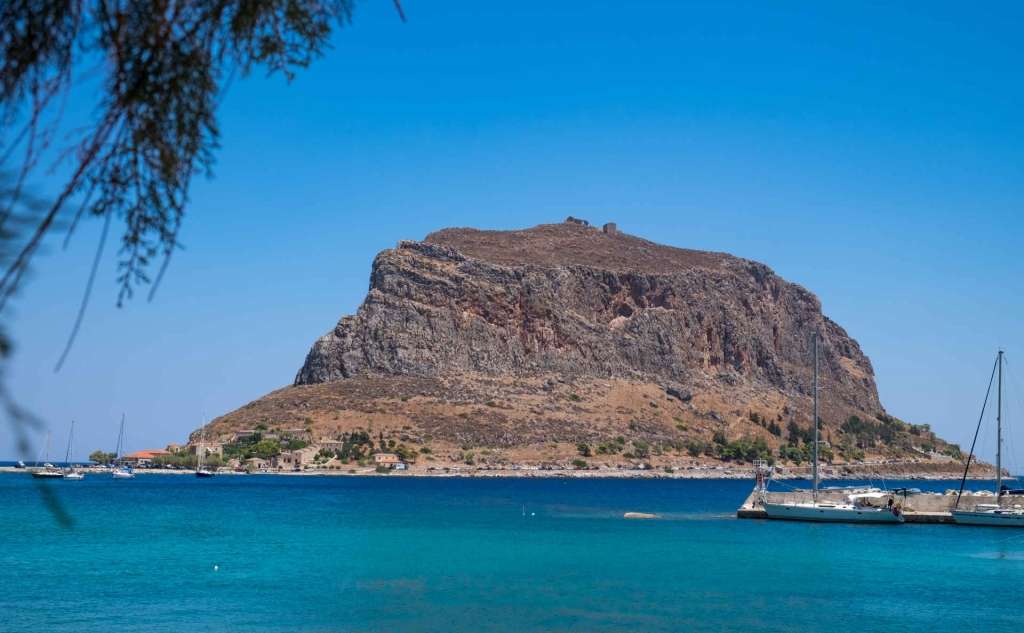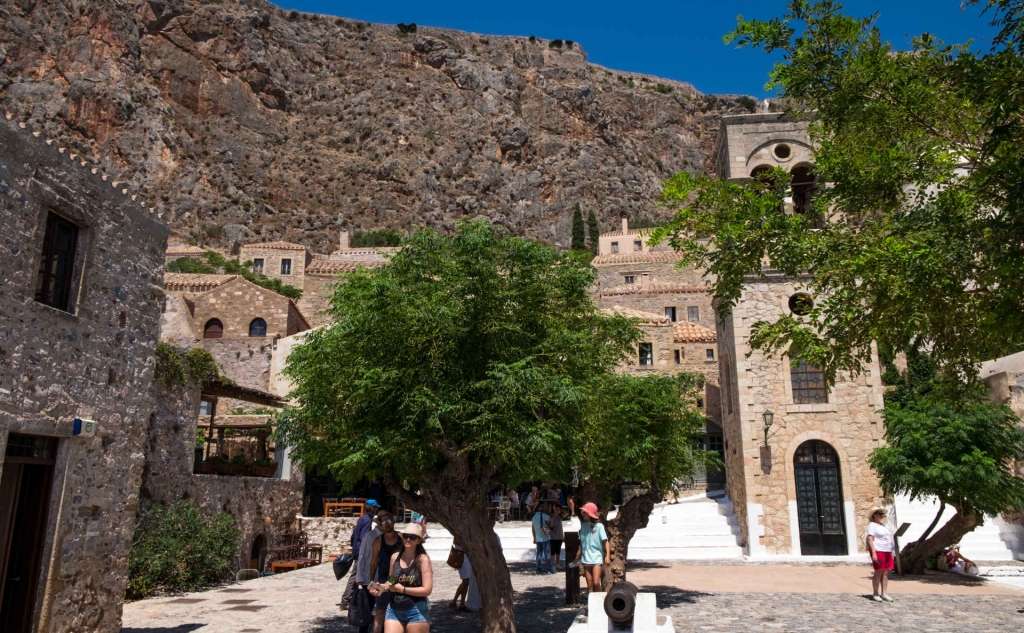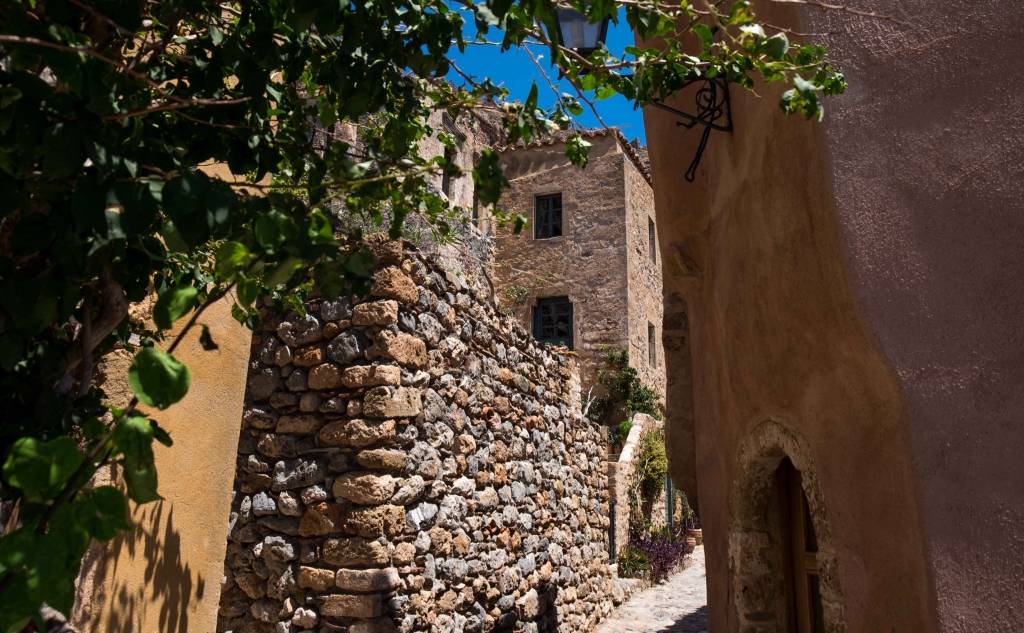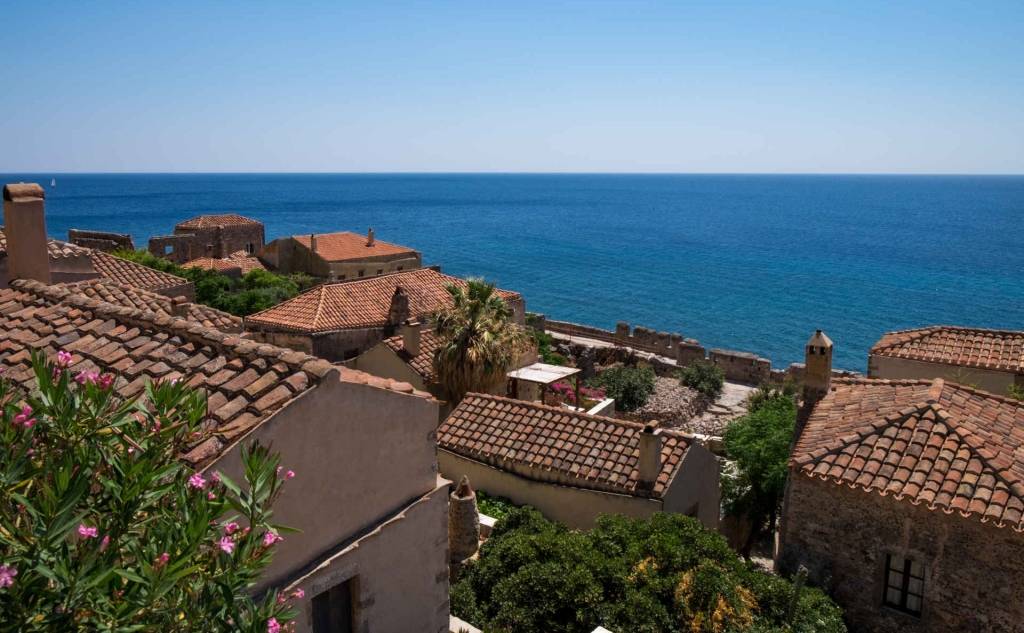Monemvasia
Monemvasia, known as Malvasia to the Franks, is a small historic town in eastern Peloponnese in the prefecture of Laconia. Its name derives from the words moni and emvasis, meaning "single entrance”, as many of its streets are narrow, suitable for pedestrians only. Monemvasia is known as the "Gibraltar of the East", as it is a miniature identical to the rock of Gibraltar. It is also known by the Turkish name "Menexe Kalesi, " meaning the Flowers' castle. The rock on which the town stands was detached from the land in 375 A.D. due to a strong earthquake, giving the place its present, unique form.
Monemvasia was founded in the 6th century due to the relocation of the inhabitants of ancient Sparta to it. According to the later Monemvasia Chronicle, the town was abandoned after the Slavic invasion in 587-588. During the Byzantine period, Monemvasia was developed into a commercial and artistic centre due to its location on important sea routes, such as the one connecting it to Sicily. During the 11th and 12th centuries, Monemvasia had significant economic growth. The flourishing maritime trading tradition facilitated the export of the renowned local wine known as Malmsey or Malvoisie (Vinummalvasium). The wine was whitish red in colour and sweet in taste. It was made by local vintners, and this specific wine is, indeed, mentioned in “Richard III” by Shakespeare. The exact way it was produced is no longer known, as the Turks banned it in 1545.
At the end of 1469, the Venetians took over Monemvasia until 1540, when it was given to the Turks, according to the Venetian-Turkish peace treaty. At that time, most of its residents fled to the Venetian islands, such as Corfu and Crete. The recovery of the Peloponnese by the Venetians (1685-1715) resulted in the resettlement of the inhabitants at Monemvasia. Consequently, the Fortress of Monemvasia was besieged by land and sea at the start of the Greek Revolution and after a four-month siege, was surrendered to the Greeks on July 23rd, 1821.
The Old Town of Monemvasia is a vibrant Medieval settlement. Castles and walls, narrow cobbled streets, old mansions, churches, arches and vaults give the impression of a town untouched by time. The Fortress Town is situated on a small island linked to the mainland by a narrow strip of land. Entering the city, on the left hand, the visitor may see the house of the poet Yiannis Ritsos (1909-1990), who was born at Monemvasia and was buried there. Next, there is the main road with the Byzantine cobbled path leading to the Central Square with the old cannon and the church of Elkomenos Christos. All around there are beautiful cafes, taverns and little shops. Across the cobbled street, there is the historic, preserved building of the 16th century (mosque), housing the Archaeological Collection of Monemvasia. After a 15- minute walk along a steep path, at a spot where the view is breathtaking, the visitor gets to the Upper Town, known as Goulas. Further away, the place is dominated by the church of Agia Sofia, built at the edge of a cliff. There are forty churches in the Castle, including the church of Panagia Chrysafitissa, Panagia Myrtidiotissa, Agios Nikolaos, and the goldsmith workshop and museum.
If you visit Monemvasia, do not forget to try the local handmade pasta called goges and saitia, which are fried cheese pies with fresh herbs. Finally, you may enjoy swimming at the picturesque harbour called Portelo, hidden on the south side of the walls, without leaving Fortress Town. In the past, it served as a refuelling port of the Castle, and it was the only place where the citizens could swim.









